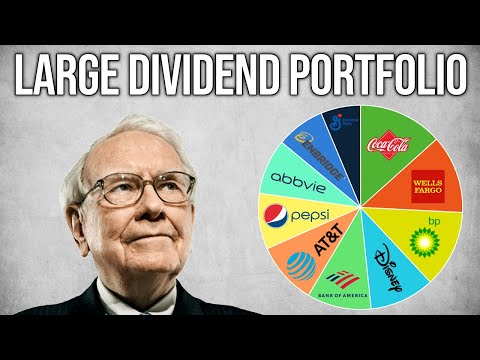What Factors Affect the Cost of Equity Capital?

Debt should be employed if the current shareholders desire to keep control. The company might opt for equity shares if they don’t mind giving up control. Businesses and financial analysts use the cost of capital to determine if funds are being invested effectively. If the return on an investment is greater than the cost of capital, that investment will end up being a net benefit to the company’s balance sheets. Conversely, an investment whose returns are equal to or lower than the cost of capital indicate that the money is not being spent wisely. This number helps financial leaders assess how attractive investments are—both internally and externally.

The retained earnings do not involve any of such obligations, either, formal or implied. According to this approach, before an investor pays a certain price for purchasing equity shares of the company, he expects a certain return on the investment which is in the form of the dividend. The market conditions of the product produced by the project for which factors affecting cost of capital funds are required is an important factor in determining the cost of capital. When the funds required for risky projects, the cost of capital is expected to register an increase, as lenders demand a higher rate to compensate for the risk they embrace. As tax rates increase, the cost of debt decreases, thereby causing overall cost of capital to decline.
Chapter 10: Financial Markets
The composition of the capital structure is determined by the business’s ability to create cash flow. It is essential to consider the cash flow in the future to choose the capital structure. The company must have sufficient funds for funding business operations, investing in fixed assets, and fulfilling debt obligations, such as interest and capital repayments.
As such, it may be felt that retained earnings involve no cost as they are not raised from outside source. Retained earnings involve cost and this cost is in the form of the opportunity cost in terms of dividends foregone by or withheld from the equity shareholders. Thus, if an investor expects that the company in which he is investing should have at least a 20% rate of earnings, cost of equity shares will be calculated on that basis. If a company is expected to earn 30%, he will be prepared to pay Rs. 150 for one share of Rs. 100 each. However, it can also be argued that the cost of equity shares may be 20%, because on the expectation of a rate of dividend at 20%, market price of the shares is Rs. 15.
Ranger Energy Services, Inc. Announces Q2 2023 Financial and … – Business Wire
Ranger Energy Services, Inc. Announces Q2 2023 Financial and ….
Posted: Mon, 07 Aug 2023 21:10:00 GMT [source]
However, a weighted average is more reasonable and appropriate as it gives due emphasis to different sources of capital in the capital structure of a firm. These are the debts which are not repayable during the life of the company. For calculating the cost of this type of debt-capital, the amount of interest payable on it is divided by the net proceeds from its issue.
Financial Risk:
Explicit cost involves the payment of fixed charges in the form of interest or dividend. Explicit cost arises when funds are raised, whereas the implicit cost arises when funds are used. Cost of capital is also known by a variety of rates- the break even rate, minimum rate, cut-off rate, target rate, hurdle rate, standard rate and so on.
- Major player in the organised hospital space is 6-7, Clinics mainly attached to hospitals and private doctor practitioners, diagnostics chains are around 3-4 organised players.
- It is calculated by dividing total cost by the number of units produced.
- Cost of capital is the measurement of the sacrifice made by the investors in order to the capital formation with a view to get a fair return on investment.
- Alternatively, an expert may choose an industry average capital structure.
- This condition might also lead the financial institutions in a more substantial risk, they eventually will increase the interest which you will have to bear to keep your business operations intact.
- Weighted average cost of capital (WACC) is determined based on the cumulative funds of source, debt, and equity.
Debt holders receive regular economic benefits (interest and principal payments). But equity investors receive dividends only at management’s discretion and they must wait until a sale to receive any capital appreciation. Some people argue that, cost of retained earnings does not involve any cost. But in reality, the cost of retained earnings is the opportunity cost of dividends foregone by its shareholder because different shareholders may have different opportunities for investing their funds.
Top-down External Factors
For capital budgeting decisions, it is the composite cost of capital which is considered. When a company collects funds by issuing debentures, bonds and preference shares it has to earn at least a rate of return on investment which is equal to the cost of raising them. As the Fed makes adjustments to interest rates, it causes changes in the risk-free rate, the theoretical rate of return for an investment that has no risk of financial loss. An increase or decrease in the federal funds rate affects a company’s WACC because the risk-free rate is an essential factor in calculating the cost of capital. The interest rate paid by the firm equals the risk-free rate plus the default premium for the firm. When discounting the earnings available to both equity investors and creditors, valuation experts apply a blended rate that incorporates the cost of equity and the cost of debt.
Brookdale Announces Second Quarter 2023 Results – PR Newswire
Brookdale Announces Second Quarter 2023 Results.
Posted: Mon, 07 Aug 2023 20:15:00 GMT [source]
It is the aggregate of the cost of capital from all sources of funds i.e., debt equity and preference capital and other loans. It is also called weighted cost of capital or composite cost of capital or over all capital mix. (1) The concept of cost of capital is used as a tool for screening the investment proposals.
Why Is the Cost of Capital So Important?
However we also need to monitor the changes in health seeking behaviour, decreased DI this impacting the OPE segment of population who pays the highest tariff. Health insurance is sure going to gain momentum and they might resort to collective bargaining. Finally the risk of Government price control mechanism is a factor which is round the corner and may surface. These factors push the industry to a new norma and cost containment which involves review of high management cost overheads expensive thought leaders in organization and cutting down the frills. Interstate and inter district travels as well as the MVT segment is also restricted the model of door step delivery in potential and loyal markets would the new way.

They are immediate financial returns paid to investors who “loan” money to the company. Companies who pay out large dividends early on may affect their cost of equity capital in the future. In most cases, preferred shares of stock most likely receive dividends as rewards for investing money into the company. Common stock shares typically get voting rights in lieu of dividends; therefore, common stock dividend information may not exist in a company’s accounting information. The cost of equity is another aspect that influences capital structure.
The usage of debt capital has an impact on the rate of return that shareholders expect from equity. The financial risk that shareholders must deal with increases as more debt is used. Any use beyond the amount increases the cost of equity, and even though the EPS is higher, the share price may fall.
If you do not receive this email, please check your junk email folders and double-check your account to make sure the application was successfully submitted. Our easy online application is free, and no special documentation is required. All applicants must be at least 18 years of age, proficient in English, and committed to learning and engaging with fellow participants throughout the program.
- Such companies may require less equipment or may benefit from very steady cash flows.
- It’s difficult to pinpoint cost of equity, however, because it’s determined by stakeholders and based on a company’s estimates, historical information, cash flow, and comparisons to similar firms.
- The particular composition and mixing of different sources of finance,
known as the financial plan or the capital structure, can affect the return
available to the investors. - The cost of such capital is equal to that expectation of equity shareholders, which they expect to be fulfilled by the management to maintain their company.
- There are several factors that make cost of capital of a firm high or low.
This is because the suppliers of capital become hesitant to grant relatively large sums without evidence of management’s capability to absorb this capital into the business. The cost of funds also depends on the level of financing that the firm requires. As the financing requirements of the firm become larger, the weighted cost of capital increases for several reasons. For instance, as more securities are issued, additional floatation costs are incurred, which in turn tend to cause a rise in the cost of capital. The Net present value of expected return is calculated by discounting the expected cash inflows at cut-off rate. Therefore cost of capital is useful in capital budgeting decisions.
Cost of Equity
The assumption is that a private firm’s beta will become the same as the industry average beta. Name 3 factors that affect the cost of capital that are beyond a firm’s control. In addition, interest payments are generally deductible as a business expense, which further reduces the cost of debt. But, when valuing larger companies, it’s important to factor in limitations on interest expense deductions under current tax law. Shareholders and business leaders analyze cost of capital regularly to ensure they make smart, timely financial decisions.

The WACC depends upon two factors – one, the cost of capital of each individual source and two, the share of each source in the total. When earnings are retained, the shareholders are forced to forego such return. Hence, the expected return foregone by the shareholders on forgone dividends may be treated as the cost of retained earnings. In this case, the yearly growth rate in dividend is added to the cost of equity capital as ascertained in accordance with the D/P ratio method.
